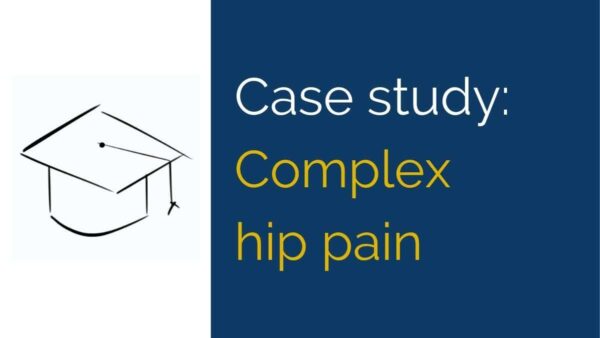Background
This case study requires advanced reasoning to provide explanations for symptom behaviour and to justify clinical decisions in the absence of a clear diagnosis. A knowledge of running biomechanics is also beneficial but not mandatory for this case.
Minimum Level
Physiotherapist with 2+ years clinical experience
History
Emma is a 24 year old competitive runner/sprinter with worsening Left hip pain.
This pain started mid last season without any obvious incident or change in training habits.
Explain how this impacts your diagnostic reasoning
Mentor’s reasoning:
The hip pain worsened each week despite reduced training loads.
Does this influence your diagnostic reasoning?
Mentor’s reasoning:
An early MRI was organised by Emma’s coach, 4 weeks after the onset of hip pain. It came back without any significant findings or reactions – there is no explanation for the Left hip pain.
Which conditions does this rule out?
Which conditions may be present but not evident on MRI?
Mentor’s reasoning:
Emma had four weeks off running to let the pain ease. It settled after 2 weeks and was not felt during normal daily activities.
Explain the duration of time it took to settle in the context of your diagnostic hypotheses
Mentor’s reasoning:
After returning to a light training session, the pain returned within the first 400m and the session had to be ceased after 15 minutes due to the hip pain.
How does this impact your diagnostic reasoning?
Justify your primary hypothesis in light of the rapid return of pain
Mentor’s reasoning:
Emma withdrew from her squad training and just tried to maintain some light running sessions on her own, twice weekly. With every session, the hip pain commenced in the first 3-5 minutes and stopped the session at around 30 minutes. There was no obvious effect on the hip pain with changes in terrain, pace or footwear.
Would you have expected your primary hypothesis to be impacted by a change in terrain, pace or footwear? Explain why.
Mentor’s reasoning:
After several doctor and Physio appointments, Emma booked in with you for another opinion. It is now 8 months after the onset of hip pain and 4 weeks since Emma’s last run.
Physical examination
On examination, you found reduced stability and pain when performing single leg squats on the Left leg.
Explain how this finding influences your reasoning on causative and aggravating factors
Mentor’s reasoning:
There was no pain on squats and Emma was unable to perform a hop test due to hip pain.
Explain how these findings fit with your provisional diagnosis
Mentor’s reasoning:
On palpation, there was soreness in Gluteus Medius and Minimus as well as Piriformis. Emma says that this matches her symptoms during a run.
Justify the link between your provisional diagnosis and the pain on palpation that matches Emma’s symptoms
Mentor’s reasoning:
Hip rotation matched the Right leg and was within expected ranges. There was a loss of hip extension though, with around half range on the Left (not limited by pain.)
How does the loss of hip extension fit with your reasoning on provisional diagnosis and causative factors?
Mentor’s reasoning:
You decide to order another MRI. The result is reported as normal, without any reactions, findings or explanations for the pain.
Justify your decision to order another MRI only six months after the first MRI.
How does this MRI result impact your provisional diagnosis and rehab plan?
Mentor’s reasoning:
Further questioning
What further questions would you ask Emma?
Are there any points above that you’d seek to clarify?
What are you hoping to gain from each question?
How will the additional information influence your reasoning on diagnosis or rehab planning?
Rehab plan
Design a rehab plan and justify each aspect of the plan
Why have you chosen that approach?
What are your expected outcomes from that approach?
How will you reassess if that particular intervention is working?
Reassessment
What’s your suggested timeframe until reassessment?
What changes are you expecting to see on reassessment?
How much of a change would you consider to be significant?
Like to continue the conversation? Head over to our Facebook page.

